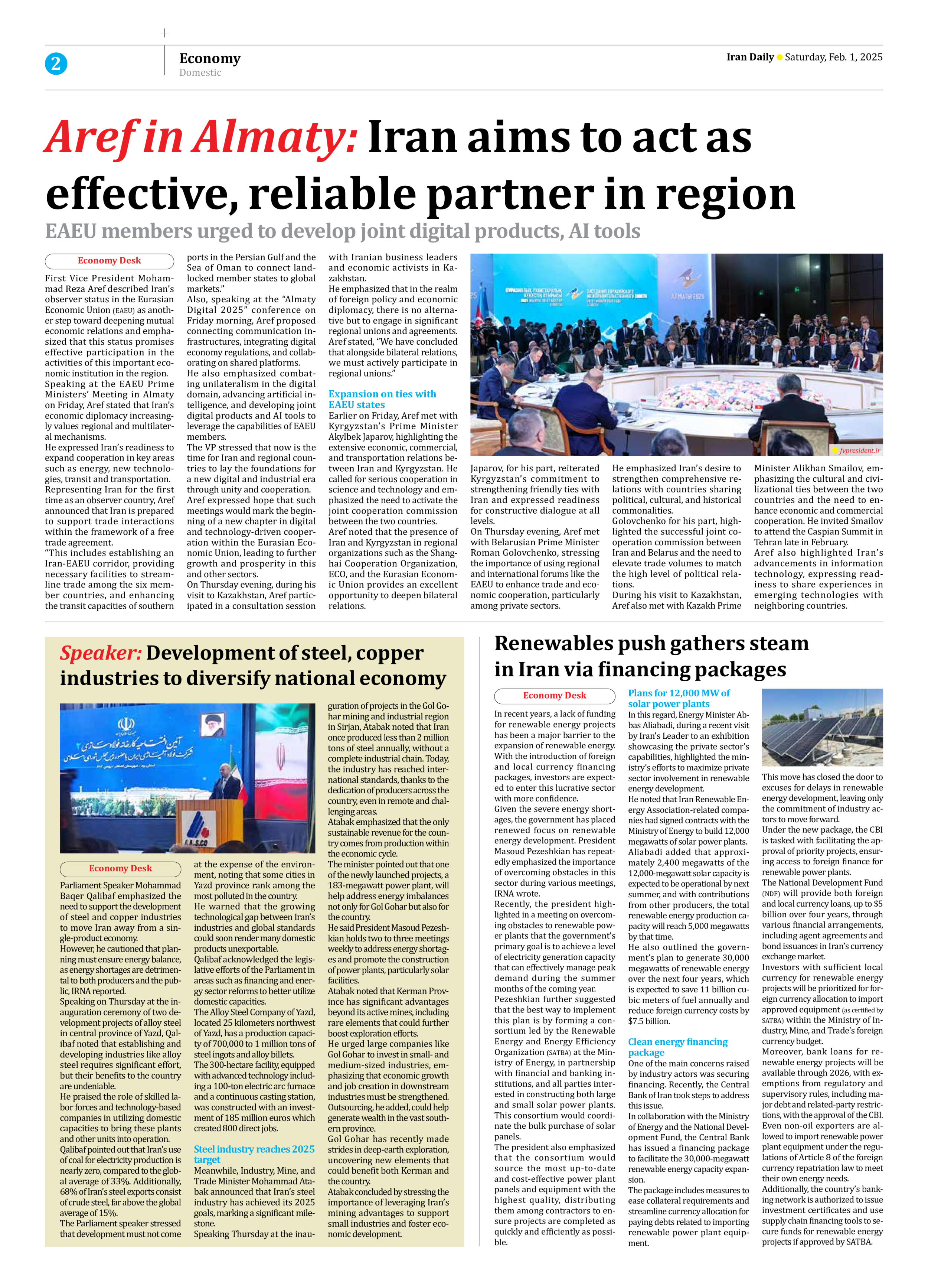
Renewables push gathers steam in Iran via financing packages
In recent years, a lack of funding for renewable energy projects has been a major barrier to the expansion of renewable energy. With the introduction of foreign and local currency financing packages, investors are expected to enter this lucrative sector with more confidence.
Given the severe energy shortages, the government has placed renewed focus on renewable energy development. President Masoud Pezeshkian has repeatedly emphasized the importance of overcoming obstacles in this sector during various meetings, IRNA wrote.
Recently, the president highlighted in a meeting on overcoming obstacles to renewable power plants that the government’s primary goal is to achieve a level of electricity generation capacity that can effectively manage peak demand during the summer months of the coming year.
Pezeshkian further suggested that the best way to implement this plan is by forming a consortium led by the Renewable Energy and Energy Efficiency Organization (SATBA) at the Ministry of Energy, in partnership with financial and banking institutions, and all parties interested in constructing both large and small solar power plants. This consortium would coordinate the bulk purchase of solar panels.
The president also emphasized that the consortium would source the most up-to-date and cost-effective power plant panels and equipment with the highest quality, distributing them among contractors to ensure projects are completed as quickly and efficiently as possible.
Plans for 12,000 MW of solar power plants
In this regard, Energy Minister Abbas Aliabadi, during a recent visit by Iran’s Leader to an exhibition showcasing the private sector’s capabilities, highlighted the ministry’s efforts to maximize private sector involvement in renewable energy development.
He noted that Iran Renewable Energy Association-related companies had signed contracts with the Ministry of Energy to build 12,000 megawatts of solar power plants.
Aliabadi added that approximately 2,400 megawatts of the 12,000-megawatt solar capacity is expected to be operational by next summer, and with contributions from other producers, the total renewable energy production capacity will reach 5,000 megawatts by that time.
He also outlined the government’s plan to generate 30,000 megawatts of renewable energy over the next four years, which is expected to save 11 billion cubic meters of fuel annually and reduce foreign currency costs by $7.5 billion.
Clean energy financing package
One of the main concerns raised by industry actors was securing financing. Recently, the Central Bank of Iran took steps to address this issue.
In collaboration with the Ministry of Energy and the National Development Fund, the Central Bank has issued a financing package to facilitate the 30,000-megawatt renewable energy capacity expansion.
The package includes measures to ease collateral requirements and streamline currency allocation for paying debts related to importing renewable power plant equipment.
This move has closed the door to excuses for delays in renewable energy development, leaving only the commitment of industry actors to move forward.
Under the new package, the CBI is tasked with facilitating the approval of priority projects, ensuring access to foreign finance for renewable power plants.
The National Development Fund (NDF) will provide both foreign and local currency loans, up to $5 billion over four years, through various financial arrangements, including agent agreements and bond issuances in Iran’s currency exchange market.
Investors with sufficient local currency for renewable energy projects will be prioritized for foreign currency allocation to import approved equipment (as certified by SATBA) within the Ministry of Industry, Mine, and Trade’s foreign currency budget.
Moreover, bank loans for renewable energy projects will be available through 2026, with exemptions from regulatory and supervisory rules, including major debt and related-party restrictions, with the approval of the CBI.
Even non-oil exporters are allowed to import renewable power plant equipment under the regulations of Article 8 of the foreign currency repatriation law to meet their own energy needs.
Additionally, the country’s banking network is authorized to issue investment certificates and use supply chain financing tools to secure funds for renewable energy projects if approved by SATBA.







